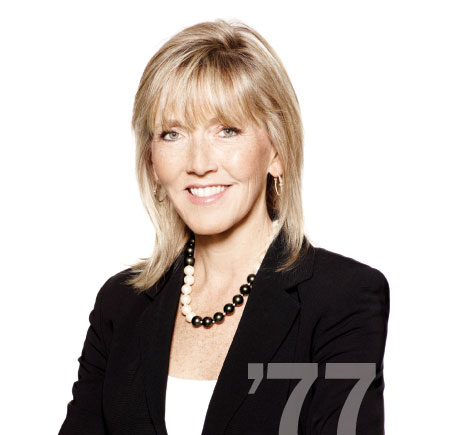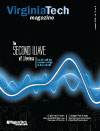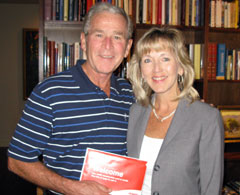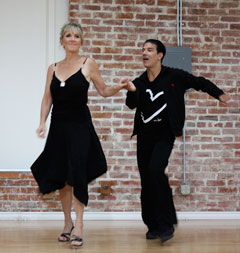 |
|
||||||
|
|
||||||||||||||||||||||||||||||||||||||||||||||||||||||||||||||||||||||||||||||||||||||||||||||||||||||||||||||||||||||
Nancy Perry Graham
by JESSE TUEL
Why? Graham is too busy dancing—at times, literally—to prove to an estimated 47 million readers that they're never too old to make their lives what they want. Now the magazine's editor-in-chief and vice president, and one of the primary public voices for an organization with tremendous clout, Graham is supremely focused on her goal "to move the needle on [the] image of aging"—so focused that her 50th birthday wasn't going to deter her. In a recent editor's note, Graham challenged her readers with "What would you do if you weren't afraid?"—a line from the book "Who Moved My Cheese?" Just what would Graham do? In her 50th year, she and her husband adopted their third child. (Her three children—5, 9, and 12 years old—live with her in Ashburn, Va., close to her D.C. office.) Recently, she jumped at the chance to team up with Corky Ballas, a ballroom-dance champion and occasional contestant on television's "Dancing with the Stars," to learn the jive in just three hours. On the occasion of the dance instructor's 50th birthday, the routine became an online video for magazine readers. If she wasn't afraid, Graham said with a laugh, she'd "probably lobby harder" to become a "Dancing" contestant. And, though she relishes her role with AARP now, she likes the idea of someday teaching at a university or writing a book. She would even consider running for office or filling a White House appointment, should such an opportunity arise. A big-picture thinker Whatever the future holds, Graham's professional background broadens her options. Her career spans such magazines as Fortune, Money, and People—venues that are seemingly incongruous but which, when combined, mirror her interests in politics, business, and entertainment. Graham possesses an innate ability to master policy on any given topic, said Frank Lalli, the former editor-in-chief of Money, who, impressed by Graham's enthusiasm, hired her as senior political editor at the publication in 1994. While at Fortune from 1983-94, Graham immersed herself in covering Department of Defense intelligence issues. Once at a pre-party gathering for the White House Correspondents' Dinner, Lalli watched Graham debate then-Chairman of the Joint Chiefs of Staff Colin Powell. Powell made his points and walked away, only to return with a "by the way" and re-engage Graham for another 10-15 minutes. "Very seldom does a journalist go nose-to-nose with the [chairman of the] Joint Chiefs of Staff," Lalli said. "But that's Nancy. In my eyes, she won the debate. In my eyes, she made very strong points." Lalli said Graham excels by understanding power, politics, and policy, and then, most importantly, how to move beyond the problems and prescribe solutions to affect change. Covering public education for Fortune, Graham recognized that schools were failing to produce prepared graduates, and she demonstrated the need to fund magnet schools, early childhood education, and the 2+2 concept (community college followed by university courses). She even advanced the conversation by leading education panels in Los Angeles and elsewhere, and running an annual Fortune education summit in D.C. The result? More funding for those three initiatives and other key areas of need. "She deserves some credit for that [funding]," Lalli said. "Those were seminal articles she did at Fortune. She's done that kind of thing over and over. And now she's one of the leading experts in retirement issues." Graham seems to welcome the pressure of a challenge. Lalli took note of the dance Graham chose to perform with Ballas—the jive. "Of all the routines, she chose the toughest one," Lalli said. A decisive leader Whatever the opportunity, Graham seems to have a knack for gracefully leading others through delicate situations. Last fall, staff at AARP The Magazine grappled with the opportunity to put former President George W. Bush on the cover. His memoir, "Decision Points," was coming out, and Bush's camp approached Graham about an "exclusive" for AARP to land the sole national magazine interview. "It was a very emotionally wrenching process because people were really concerned about Bush's policies," said Marilyn Milloy, the magazine's deputy editor. "It seemed to a lot of people that we were giving him a platform." Timeliness was also a factor because other media outlets would discuss the memoir before the magazine reached its readers. Guided by the feedback, Graham moved to receive assurance that Bush would reserve specific topics for AARP. She also developed a strategy to get aspects of the AARP story onto the Web to create buzz without being late to the overarching story. "It's safe to say she was very much a minority among her own staff," Milloy said. "She saw what it could be, and she dealt with the timing issues and made sure the piece didn't come across as fawning or overly aggressive." "I will take all the credit—or the blame—for the decision to put George Bush on the cover," said Graham, who conducted the interview at Bush's Texas home. "There was dissension in the ranks. It was kind of intense, but I really felt in my gut that it was the right thing to do. I'm still getting some angry letters [from readers]. Whether people like him or not, he's still a fascinating historical figure." All the while, Graham never alienated her staff with her decision. Milloy described a manager who is adept at balancing constructive criticism with all-out fun. "She's tough. She's a real taskmaster, but really quite brilliant at getting the most out of her staff. Everybody loves her," Milloy said. "You can never stay mad at her. She's got a fast wit, and sometimes we're just on the floor." Creative direction Graham said that her four years in Blacksburg fostered close friendships, helped her overcome fears and insecurities, and built up her confidence. The collegiate experience cemented her sense of optimism before heading into the world. "In addition to being four of the happiest years of my life, it was such a nurturing place. It gave me confidence for everything I've done since," Graham said. After college, several years in computer marketing and cash-management marketing convinced Graham of her creative leanings. In New York City, she tried her hand at freelancing and acting while inundating Time Inc. with résumé after résumé, finally landing a job as a Fortune reporter in 1983. In 1989, she moved to L.A. as Fortune's Los Angeles bureau chief. Garnering experience at Money and then at People (where she was a senior editor and Insider columnist), Graham returned to New York City in 2000 as executive editor for Family Money magazine and soon became the Boston Consulting Group's deputy editorial director. In 2003, she landed in Washington, D.C., as AARP The Magazine's deputy editor. In 2008, she became the publication's first female editor—a "breakthrough," she said. "For a mass-market, important magazine, it's a sort of pioneering step for women. Once you do it, it's easier for others." In terms of political power, the incredible size of the AARP audience is constantly on Graham's mind. She must balance the highest journalistic standards with the caveat that AARP, a nonprofit corporation, cannot engage in lobbying. "I have to be very careful in the magazine to make sure what we do is objective journalism, as opposed to partisan journalism," she said. Graham must always walk that fine line, Milloy said, and "she dances it beautifully." |
|
|||||||||||||||||||||||||||||||||||||||||||||||||||||||||||||||||||||||||||||||||||||||||||||||||||||||||||||||||||||






